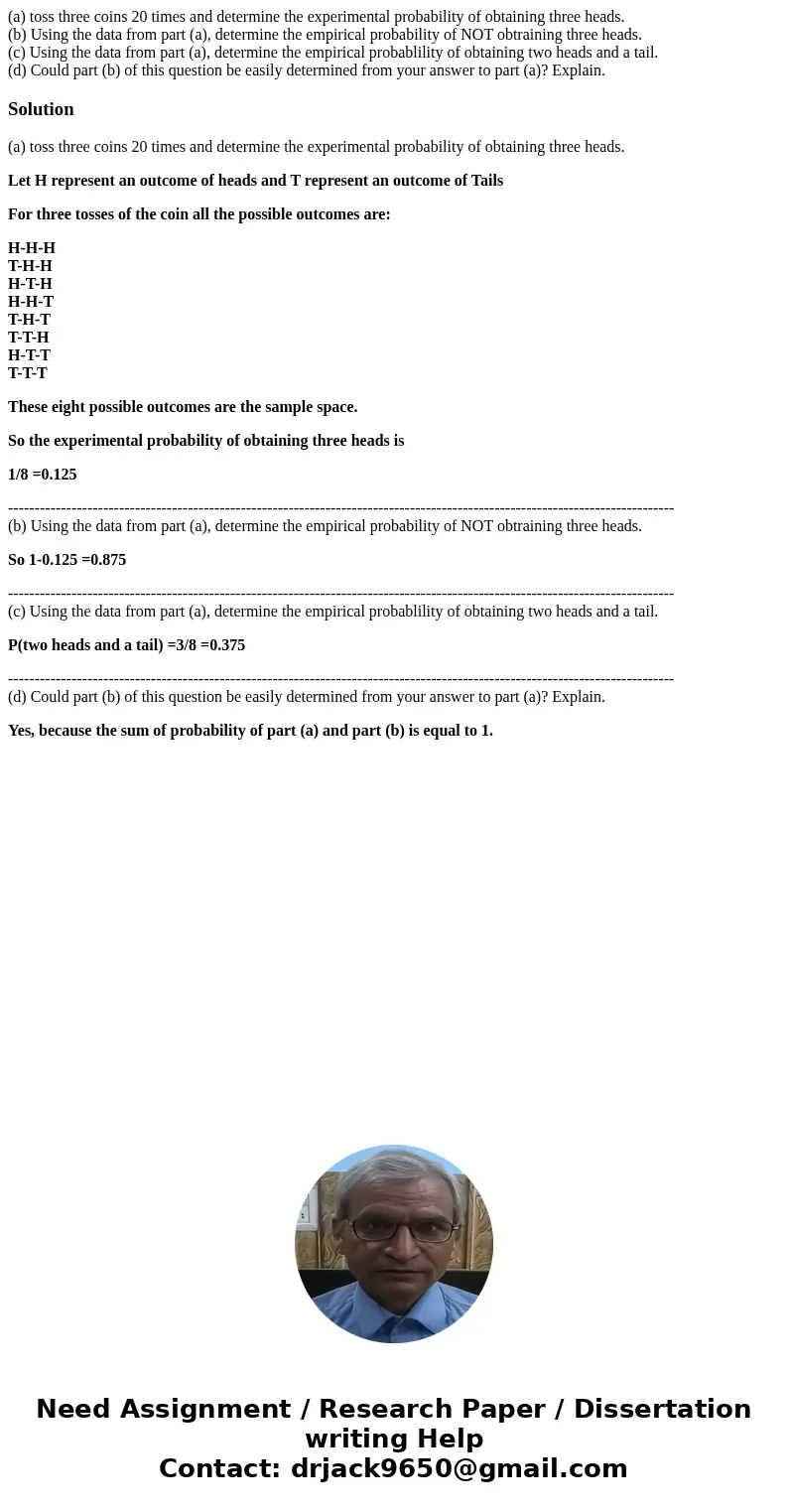a toss three coins 20 times and determine the experimental p
(a) toss three coins 20 times and determine the experimental probability of obtaining three heads.
(b) Using the data from part (a), determine the empirical probability of NOT obtraining three heads.
(c) Using the data from part (a), determine the empirical probablility of obtaining two heads and a tail.
(d) Could part (b) of this question be easily determined from your answer to part (a)? Explain.
Solution
(a) toss three coins 20 times and determine the experimental probability of obtaining three heads.
Let H represent an outcome of heads and T represent an outcome of Tails
For three tosses of the coin all the possible outcomes are:
H-H-H
T-H-H
H-T-H
H-H-T
T-H-T
T-T-H
H-T-T
T-T-T
These eight possible outcomes are the sample space.
So the experimental probability of obtaining three heads is
1/8 =0.125
------------------------------------------------------------------------------------------------------------------------------
(b) Using the data from part (a), determine the empirical probability of NOT obtraining three heads.
So 1-0.125 =0.875
------------------------------------------------------------------------------------------------------------------------------
(c) Using the data from part (a), determine the empirical probablility of obtaining two heads and a tail.
P(two heads and a tail) =3/8 =0.375
------------------------------------------------------------------------------------------------------------------------------
(d) Could part (b) of this question be easily determined from your answer to part (a)? Explain.
Yes, because the sum of probability of part (a) and part (b) is equal to 1.

 Homework Sourse
Homework Sourse